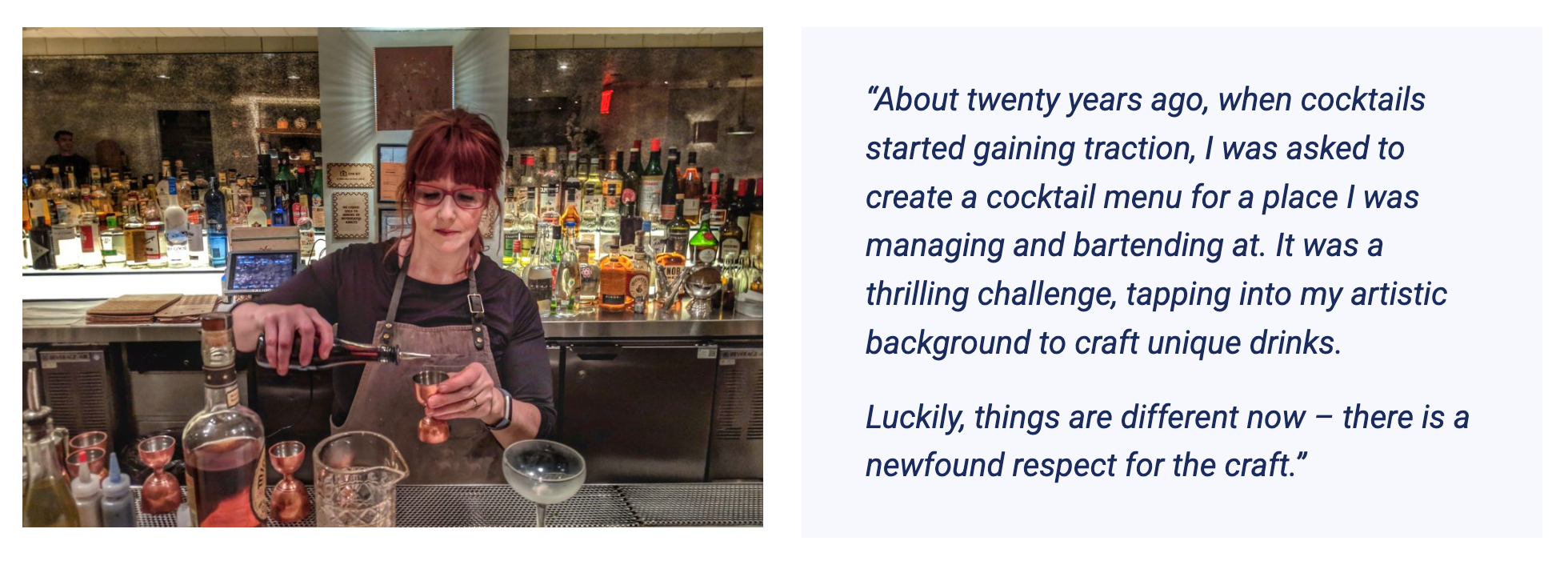Discover the iconic Bartenders who shaped American cocktail culture and transformed bartending from a simple trade into an influential craft.
Understanding these legends helps us appreciate how Bartender history evolved into the vibrant, creative industry we know now.
A Short Cocktail History in Bartender History
Bartender history dates back centuries, but the modern craft truly took shape in the early 1800s.
From classic recipe books to Prohibition-era ingenuity, each era introduced techniques and personalities that advanced cocktail culture.
To understand today’s thriving bar scene, we explore the most iconic bartenders who built its foundation.
The Golden Age of Iconic Bartenders (1806–1919)
The Golden Age marked the moment bartending became a respected profession, thanks mainly to Jerry Thomas, whose “Bon Vivant’s Companion” revolutionized cocktail culture.
Tom Bullock made history as the first African American to publish a cocktail book, further shaping early bartender history.
Harry Johnson solidified professional standards with his groundbreaking “Bartender’s Manual,” teaching technique, etiquette, and bar management.
Prohibition and the Global Rise of Cocktail Culture (1920–1933)
During Prohibition, many American Bartenders moved overseas, spreading American cocktail culture globally.
Harry Craddock found fame at London’s Savoy Hotel, where he published The Savoy Cocktail Book and refined classics like the dry martini.
His mentor, Ada Coleman, was one of the earliest female Bartenders to achieve international renown, leaving a lasting imprint on bartender history.
Tiki Innovators and Their Impact on Cocktail Culture (1934–1968)
After Prohibition, bartenders like Donn Beach and Trader Vic created the Tiki movement, reshaping mid-century cocktail culture.
Their exotic, rum-forward drinks and immersive Polynesian themes transformed the American bar experience. The Mai Tai became one of the most enduring creations from this era.
The Dark Ages in Bartender History (1969–1989)
This era marked a major shift in Bartender history, as artificial mixers, bottled sour concentrates, and neon-colored drinks replaced traditional craftsmanship.
Cocktails like the Piña Colada and Tequila Sunrise surged in popularity, reflecting a culture that favored convenience over technique.
While many classics disappeared from menus, this period unintentionally sparked the backlash that fueled the craft cocktail renaissance of the 1990s.
The Modern Revival of Cocktail Culture (1988–Present)
The late ’80s sparked a renewed interest in classic cocktails and technique, fueled by both pop culture and passionate Bartenders.
Dale DeGroff, Sasha Petraske, Julie Reiner, and Audrey Saunders helped reintroduce fresh ingredients and balanced recipes.
Their work restored the artistry of bartending and shaped the modern era of cocktail culture.
Pioneering Female Bartenders Who Shaped Cocktail Culture
Trailblazers like Ada Coleman and Audrey Saunders significantly influenced the evolution of cocktail culture.
Coleman served stars at the Savoy and became one of history’s most celebrated female Bartenders.
Saunders brought sophistication to modern mixology with creations like the Gin-Gin Mule and Old Cuban.
Nowadays, many women who started bartending just to make some extra cash have since made a name for themselves in the industry, becoming highly respected professionals.
One such example is Paula Lukas, a legendary female New York Bartender whose remarkable career we had the pleasure of exploring through an interview:

Conclusion on Iconic Bartenders and Cocktail Culture
Cocktail culture is prevalent in America. While bartending used to have a bad reputation, the people we talked about throughout this article have changed that notion.
Nowadays, there are many competitions and festivals dedicated to bartending, where Bartenders express their creativity and skills to mix drinks and come up with innovative ways to do that.














Loading comments...